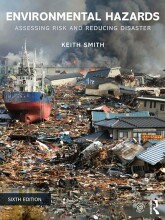Hazard in the environment - Woordenlijst
13 important questions on Hazard in the environment - Woordenlijst
What does 'Polarity of water molecules' mean?
What does shear strain rate (ṡ)?
What is a laminar flow?
Newtoniaanse stroming staat gelijk aan laminaire stroming. Dit is een hele rustige vorm van stroming.
- Higher grades + faster learning
- Never study anything twice
- 100% sure, 100% understanding
What is meant by 'elements at risk' and 'specific risk'?
Element at risk: means the population, properties, economic activities and so on, at risk in a given area
Specific risk: means the expected degree of loss due to a particular (natural) phenomenon (e.g. a forest fire)
What is a steady non-uniform flow?
What is an unsteady, non-uniform flow?
What is an unsteady uniform flow?
Boundary layer separation: what are divergent flows and how does this work?
Pressure increases in the direction of the flow. The fluid in the boundary layer has so little momentum that it is brought to rest, and possibly reversed in direction. Reversal lifts the boundary layer. Therefore, turbulence is increasing and the other flow is losing energy.
What is flow velocity?
What is dynamic viscosity?
What is kinematic viscosity?
What is the Venturi Experiment?
What is logistic flow velocity?
The question on the page originate from the summary of the following study material:
- A unique study and practice tool
- Never study anything twice again
- Get the grades you hope for
- 100% sure, 100% understanding
































